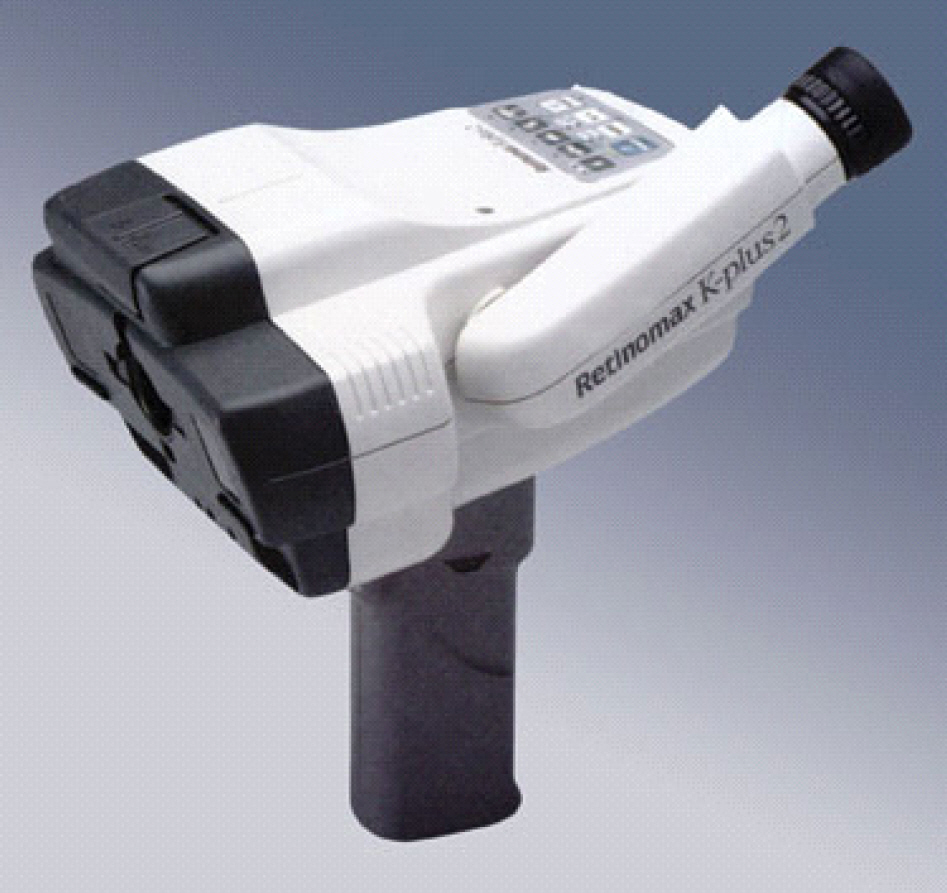J Korean Ophthalmol Soc.
2010 Mar;51(3):328-332.
Comparison of Keratometric Values Measured by the Handheld Autokeratometer, On-table Autokeratometer and Manual Keratometer
- Affiliations
-
- 1Department of Ophthalmology and Visual Science, The Catholic University of Korea College of Medicine, Seoul, Korea. eyeshin@catholic.ac.kr
Abstract
- PURPOSE
To compare the keratometry measurements by the handheld Nikon Retinomax K-plus2, the on-table Canon RK-5 autokeratometer, and the manual Topcon OM-4 keratometer and to evaluate the degree of agreement among the three instruments.
METHODS
Adults (n=30) and children (n=40) presenting toa tertiary eye hospital clinic were examined by an optometrist. Topcon OM-4 keratometer, Nikon Retinomax and the on-table Canon RK-5 autokeratometer analyses were performed in order. The horizontal and vertical keratometry data were measured. The vector components of astigmatism, mean bias and agreement among the three types of measurements were evaluated.
RESULTS
There were no significant differences among the three keratometers in horizontal or vertical keratometry or in central corneal astigmatism in both the adult and child groups (p-value>0.05). The keratometers which were estimated with Retinomax K-plus2 were highly correlated with those by on-table RK-5 autokeratometer (min. 0.89, max. 0.97) and Topcon OM-4 keratometer (min. 0.67, max. 0.94) in the adult group, while in the child group, the three instruments showed slightly decreased correlation (min. 0.45, max. 0.97 on RK-5, min. 0.36, max. 0.92 on OM-4), especially in the left eyes.
CONCLUSIONS
The handheld Retinomax K-plus2 provided comparable data to that of the conventional on-table Topcon and manual keratometers. This instrument will beuseful in the clinic to measure keratometry in children or immobilized patients who have difficulty sitting during the examination.
Figure
Reference
-
References
1. Lloyd IC, Goss-Sampson M, Jeffrey BG, et al. Neonatal cataract: aetiology, pathogenesis, and management. Eye. 1992; 6:184–96.
Article2. Cho CW, Kim SJ, Park YG. The utility of hand held autorefractometer for refraction in children. J Korean Ophthalmol Soc. 1997; 38:1044–9.3. La TY, Oh JR. Reliability of Refractive Measurement by Hand-held Autorefractor. J Korean Ophthalmol Soc. 2002; 43:2241–5.4. Kim M, Choi YS, Lu WN, et al. The developement of an objective test for visual acuity assessment using optokinetic nystagmus stimuli presented head – mounted display: Seohan objective visual acuity test. J Korean Ophthalmol Soc. 2000; 41:871–8.5. Noonan CP, Raop GP, Kaye SB, et al. Validation of a handheld automated keratometer in adults. J Cataract Refract Surg. 1998; 24:411–44.
Article6. Manning CA, Kloess PM. Comparison of portable automated keratometry and manual keratometry for IOL calculation. J Cataract Refract Surg. 1997; 23:1213–6.
Article7. Sunderraj P. Clinical comparison of automated and manual keratometry in preoperative ocular biometry. Eye. 1992; 6:60–2.
Article8. Liang CL, Hung KS, Park N, et al. Comparison of the handheld Retinomax K-Plus2 and on-table autokeratometers in children with and without cycloplegia. J Cataract Refract Surg. 2004; 30:669–74.
Article9. Farook M, Venkatramani J, Gazzard G, et al. Comparisons of the Handheld Autorefractor, Table-Mounted Autorefractor, and Subjective Refraction in Singapore Adults. Optom Vis Sci. 2005; 82:1066–70.
Article10. Cordonnier M, De Maertelaer V. Comparison between two hand-held autorefractors: the Sure-Sight and the Retinomax. Strabismus. 2004; 12:261–74.
Article11. Lam AK, Chan R, Chiu R. Effect of instrument rotation on handheld keratometry. J Cataract Refract Surg. 2004; 30:2590–4.
Article
- Full Text Links
- Actions
-
Cited
- CITED
-
- Close
- Share
- Similar articles
-
- Comparative Analysis of Corneal Refraction and Astigmatism Measured with Autokeratometer, IOL Master, and Topography
- Clinical Reliability of IOL Master 700 in Measurement of Pupil Diameter and Corneal Curvature
- Comparative Analysis of Corneal Refractive Power Measured with AL-Scan(R), Autokeratometer, and Pentacam(R)
- Which Keratometer is Most Reliable for Correcting Astigmatism with Toric Intraocular Lenses?
- Comparision of Corneal Refractive Power Measured with Opitcal Low-coherence Reflectometry, Autokeratometer, and Topography in Children


